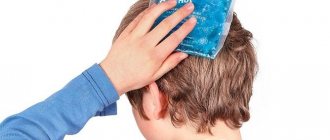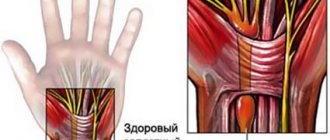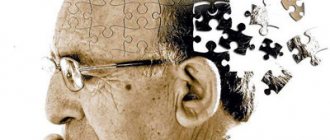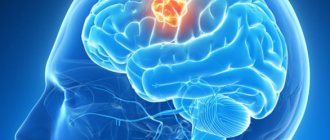Such a phenomenon as auditory hallucinations makes not only the person who encountered them nervous, but also his loved ones. Some cases can be serious because they indicate mental disorders. Minor noises that do not carry a semantic meaning may be associated with diseases of the hearing organs, but this does not mean that they can be ignored; treatment is required in each case.
Between normality and pathology
Disturbances in the perception of the surrounding world by the auditory analyzer proceed according to fundamentally similar patterns to any other types of hallucinations, but there are a number of significant differences.
Auditory hallucinations are possible even from ordinary fatigue
For example, the appearance of elementary hallucinations in the form of ringing, tinnitus or single sounds (acoasma) is possible with a fairly large number of various diseases that do not directly relate to the psyche. This includes arterial hypertension, dyscirculatory encephalopathy, cerebral atherosclerosis, and a long range of various pathologies. Therefore, if elementary auditory hallucinations begin to appear regularly, you should contact your local therapist at your place of residence so that he can examine and figure out what the reason is.
If we talk about functional hallucinations, then their occurrence against the background of a constant and uniform external stimulus occurs much easier than with deceptions of other senses. Quite a lot of people, overtired, hear music or someone’s voices in the murmuring of a stream, the howling of the wind or the monotonous operation of some mechanism.
Elementary and functional hallucinations during fatigue can be relieved by taking vitamin C in sufficient quantities.
Hypnagogic and hypnopompic deceptions of auditory perception, although less common than visual ones, can also occur normally, although sometimes, especially when they appear for the first time, they can be harbingers of various disease processes.
Treatment of hallucinations
Hallucinations are a manifestation of the underlying disease. Depending on this, treatment consists of anticonvulsants, antidepressants, psychotropic drugs, neurosurgical and otolaryngological methods, as well as drug addiction therapy. Visions associated with normal sleep and wakefulness are not subject to specialized treatment.
Psychiatric patients should be treated by a psychiatrist. Psychotropic drugs are prescribed: tizercin, haloperidol, relanium. Single, transient episodes can be attributed to short-term factors: sleep disturbance, overwork, meditation. You can do without treatment.
However, if the general condition cannot recover on its own, you need to consult a therapist or psychologist. It is necessary to determine the cause and create a treatment plan.
Auditory hallucinations combined with visual ones
Full-fledged auditory hallucinations can appear both in combination with visual ones, thus adding more completeness to the illusory reality, and “in their pure form” of deception of the auditory analyzer exclusively.
The first option is typical either for various types of intoxication, discussed in more detail in the article on visual hallucinations, or in the advanced phase of the action of hallucinogenic substances, or with advanced psychosis. Detailed questioning and assessment of whether the patient has a critical attitude towards his condition will help to distinguish between these conditions. Be that as it may, if someone around you suddenly begins to perceive non-existent objects simultaneously with different senses, then you should immediately call an ambulance, because this indicates a disorder in the final link of information processing, the brain, and is a very alarming signal.
While the doctors are traveling, you should try to talk calmly with the patient, distract him, and calm him down. He can be rude, agitated and even dangerous - this must also be understood. Just imagine your own aggression or fear if you saw nearby, say, a poisonous snake, an armed killer or some kind of terrible demon. Alas, when the brain, affected by a pathological process, begins to “bring into reality” the fruits of an unhealthy imagination, then most often this happens with the objects of certain already existing phobias. That is, if a person is most afraid of devils, most likely, during delirium or hallucinosis, he will see them, regardless of the reasons that caused the disorder. All this must be kept in mind when communicating with a person who is hallucinating.
Symptoms of hallucinations
It is difficult to describe “typical” hallucinations, as they vary in duration, quality, and how patients experience them. Some visions last only a few seconds. However, some patients with Charles Bonnet syndrome experienced visual hallucinations for several days. In people taking psychotropic drugs, they lasted several hours.
There is not always a connection between cause and emotional response. Only 13% of patients rate them as pleasant, and 30% find them terrible. Most patients with narcolepsy, alcoholic hallucinosis, or PTSD report unpleasant, frightening hallucinations.
They occur after emotional stress, stress, medications, severe fatigue or mental illness, during periods of consciousness. Appear as visions, sounds, voices, tactile sensations, smells, sounds. Patients suffering from dementia and schizophrenia experience fear of hallucinations. Visions are possible in healthy people after nervous overload, fatigue, or caused intentionally by taking drugs or meditation.
True and false auditory hallucinations
Purely auditory, without the inclusion of a visual analyzer, deceptions of perception occur in the already mentioned number of diseases that cause elementary hallucinations in the event of further development of the pathological process. They are rarely permanent, correlating in intensity with exacerbations of the underlying disease.
Here we come close to an interesting issue - pseudohallucinations, the appearance of which, apart from taking narcotic substances, almost always signals a specific disease - schizophrenia.
All the types of hallucinations we have described so far are true, that is, they are projected into the outside world, in contact with a real situation - music plays behind a real wall, calls or exclamations are heard from behind a real door or on a real street, and even devils walk on a real floor or sit on real chairs. The surrounding world as the main “base” for hallucinations indicates that they are real.
The patient either hears false or pseudohallucinations as if from inside his own head, or perceives them in some other unconventional way - with the “third eye”, “astral vision”, “spiritual sensation”, etc.
Pseudohallucinations are usually projected in the patient's head
Pseudohallucinations are most often projected inside the head, when they appear, replacing the real world and pushing it into the background, and in difficult cases, completely hiding it. Such patients understand that only they have hallucinations, but nevertheless do not doubt their reality. Naturally, the logical apparatus of the brain concludes that these images are “induced” from the outside. Foreignness and a forced nature are common sensations with pseudohallucinations.
Pseudohallucinations were first described by the Russian scientist V.Kh. Kandinsky, who himself suffered from mental illness, thanks to which, with the help of enormous willpower, he was able to compile a very detailed report “from the other side.”
V.Kh. Kandinsky described the condition of a sick person, based on his own experience
Most often, false perception deceptions take the form of voices. A number of scientists believe that voices in schizophrenia are the patient’s own thoughts, which have escaped from his volitional control due to a split in the mind and have gained “independence” in the form of voicing and gaining independence in behavior.
Voices are most often commenting, i.e. express “their opinion” regarding certain actions of the patient, straining him and thereby distracting him from everyday activities.
In a number of cases, voices acquire a threatening character or become imperative, i.e. give a person orders that he is unable to resist. This type of pseudohallucination is especially dangerous, since those susceptible to it often commit suicide or harm others.
In any case, the presence of pseudohallucinations is a concrete reason to consult a psychiatrist, and this must be done immediately.
Statistics
Many researchers believe that statistics are underestimated for several reasons:
- Fear of being branded “crazy”;
- Some types, mainly in the elderly, have not been sufficiently studied;
- Many people are afraid to admit to taking drugs.
Based on a few studies (13 thousand adults surveyed) in 2000, the following statistics are known:
- 6% of adults experience it once a month, 2% once a week;
- 27% experience hallucinations during the day;
- 3% experience tactile hallucinations, 3% visual, 0.6% auditory. Tactile, associated with drug use.
There is no evidence that hallucinations occur more frequently in certain ethnic groups and are not associated with gender. Demographic characteristics are as follows:
- The child has. Hallucinations occur in children under eight years of age. About 40% have schizophrenia (all types), the child has visual or auditory predominance;
- Eye diseases – 14% of patients receiving medications for glaucoma or age-related macular degeneration experienced distinct vision vision;
- Alzheimer's disease - in 40% in the later stages;
- Addiction. Among schoolchildren and students, hallucinogens are the third most consumed drug (after marijuana and alcohol). The highest level is in the Caucasus, in men aged 18-25 years;
- In healthy people, they occur during the transition from wakefulness to sleep or vice versa. This condition is not considered pathological;
- Migraine. 10% of patients experience visual visions before the onset of an attack;
- Epilepsy. 80% of sufferers experience visual, olfactory, and auditory disturbances before an attack;
- Post-traumatic – after traumatic injuries, 60% experience auditory injuries.
Notes
- Paracusia | definition of paracusia by Medical dictionary
- ↑ 1 2 3 4 5 6 7 8 9 10 Zhmurov.
general psychopathology. — 2009. - Silbersweig DA, Stern E., Frith C., Cahill C., Holmes A., Grootoonk S., Seaward J., McKenna P., Chua SE, Schnorr L., Jones T., Frackowiak RSJ
A functional neuroanatomy of hallucinations in schizophrenia // Nature. - 1995. - T. 378. - P. 176-179. - Neuroanatomy of 'Hearing Voices': A Frontotemporal Brain Structural Abnormality Associated with Auditory Hallucinations in Schizophrenia
- Patricia Boksa.
On the neurobiology of hallucinations (English) // Psychiatry Neuroscience : journal. - 2009. - July (vol. 34, no. 4). - P. 260-262. - Kevin M. Spencer, Margaret A. Niznikiewicz, Paul G. Nestor, Martha E. Shenton, Robert W. McCarley.
Left auditory cortex gamma synchronization and auditory hallucination symptoms in schizophrenia (English) // BMC Neuroscience. - 2009. - DOI:10.1186/1471-2202-10-85. - R. Wilson, D. Gilley, D. Bennett, L. Beckett, D. Evans.
Hallucinations, delusions, and cognitive decline in Alzheimer's disease // Neurol Neurosurg Psychiatry : Journal. - 2000. - August (vol. 69, no. 2). — P. 172—177. - Models of Madness: Psychological, Social and Biological Approaches to Schizophrenia / Edited by J. Read, R. L. Mosher, R. P. Bentall. - Hove, East Sussex: Brunner-Routledge, 2004. - 373 p. — ISBN 1583919058. In Russian: Models of madness: Psychological, social and biological approaches to understanding schizophrenia / Ed. J. Reed, L.R. Moshera, R.P. Bentalla. - Stavropol: Revival, 2008. - 412 p. — ISBN 9785903998012. See chap. "Childhood Trauma, Loss and Stress." J. Reed, L. Goodman, E. P. Morrison, K. A. Ross, W. Aderhold
- Barker P.
Psychiatric and Mental Health Nursing- The craft of caring. - England: Hodder Arnold, 2009. 2nd Edition. - David L. Penn, Piper S. Meyer, Elizabeth Evans, RJ Wirth, Karen Cai, Margaret Burchinal.
A randomized controlled trial of group cognitive-behavioral therapy vs. enhanced supportive therapy for auditory hallucinations // Schizophrenia Research. — 2009. — April (vol. 109). - P. 52-59. - Waters F.
Auditory hallucinations in psychiatric illness // Psychiatric Times. - 2010. - March 1 (vol. 27, no. 3). - pp. 54-58. - Official website of the Intervoice movement
- Florence L. Askenazy, Karine Lestideau, Anne Meynadier, Emmanuelle Dor, Martine Myquel, Yves Lecrubier.
Auditory hallucinations in pre-pubertal children // European Child & Adolescent Psychiatry. — 2007. — September (vol. 16). - P. 411-415. - ↑ 1 2 3 4 Simon R. Jones, Charles Fernyhough.
Neural correlates of inner speech and auditory verbal hallucinations: A critical review and theoretical integration // Clinical Psychology Review. - 2007. - March (vol. 27). - pp. 140-154. — DOI:10.1016/j.cpr.2006.10.001. - ↑ 1 2 3 Charles Fernyhough and Simon R. Jones.
Hallucination // Thinking Aloud About Mental Voices / In Fiona Macpherson & Dimitris Platchias (eds.). - Cambridge,: MA: MIT Press, 2013. - ↑ 1 2 3 Charles Fernyhough.
Alien voices and inner dialogue: towards a developmental account of auditory verbal hallucinations // New Ideas in Psychology. - 2004. - April (vol. 22). - pp. 49-68.
Diagnosis and treatment methods[ | ]
Pharmaceuticals[ | ]
The main medications used in the treatment of auditory hallucinations are antipsychotic drugs, which affect dopamine metabolism. If the main diagnosis is an affective disorder, then antidepressants or mood stabilizers are often additionally used. The listed medications allow a person to function normally, but in essence are not treatment, since they do not eliminate the root cause of the thinking disorder[9].
Psychological treatment methods[ | ]
Cognitive therapy has been found to help reduce the frequency and distress of auditory hallucinations, especially in the presence of other psychotic symptoms[10]. Intensive supportive therapy was found to reduce the frequency of auditory hallucinations and increase the patient's resistance to hallucinations, leading to a significant reduction in their negative impact. Other cognitive and behavioral treatments have been used with mixed success.
Experimental and alternative treatments[ | ]
In recent years, repetitive transcranial magnetic stimulation (TMS) has been studied as a biological treatment for auditory hallucinations. TMS affects the neural activity of the cortical areas responsible for speech. Research has shown that when TMS is used as an adjunct to antipsychotic treatment in complex cases, the frequency and intensity of auditory hallucinations may be reduced[11]. Another source for unconventional methods is the discovery of the international voice-hearing movement[12].
Potential Causes
One of the main causes of auditory hallucinations in psychotic patients is schizophrenia. In such cases, patients exhibit a consistent increase in the activity of the thalamic and subcortical nuclei of the striatum, hypothalamus and paraliminal regions; confirmed by positron emission and magnetic resonance imaging [3][4]. Another comparative study of patients found increases in temporal white matter and temporal gray matter volumes (regions critical to internal and external speech). It is understood that both functional and structural abnormalities in the brain can cause auditory hallucinations, but both may have a genetic component[5][6]. It is known that mood disorder can also cause auditory hallucinations, but they are more mild than those caused by psychosis. Auditory hallucinations are a relatively common complication of serious neurocognitive disorders (dementia), such as Alzheimer's disease[7].
Research has shown that auditory hallucinations, particularly voices commenting and voices telling people to harm themselves or others, are much more common in psychotic patients who experienced physical or sexual abuse as children than in psychotic patients who were not abused as children. violence. Moreover, the stronger the form of violence (incest or a combination of both physical and sexual abuse of children), the stronger the degree of hallucinations. If there were multiple episodes of violence, this also influenced the risk of developing hallucinations. It has been noted that the content of hallucinations in people who have been victims of childhood sexual abuse includes both elements of flashbacks (flashbacks of memories of a traumatic experience) and more symbolic embodiments of the traumatic experience. For example, a woman who had been sexually abused by her father since age 5 heard "men's voices outside her head and children's voices screaming inside her head." In another case, when a patient experienced hallucinations telling her to kill herself, she identified the voice as that of the perpetrator.[8]









